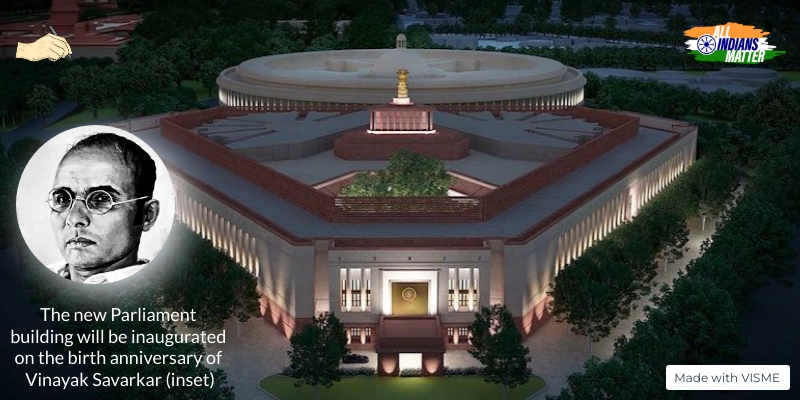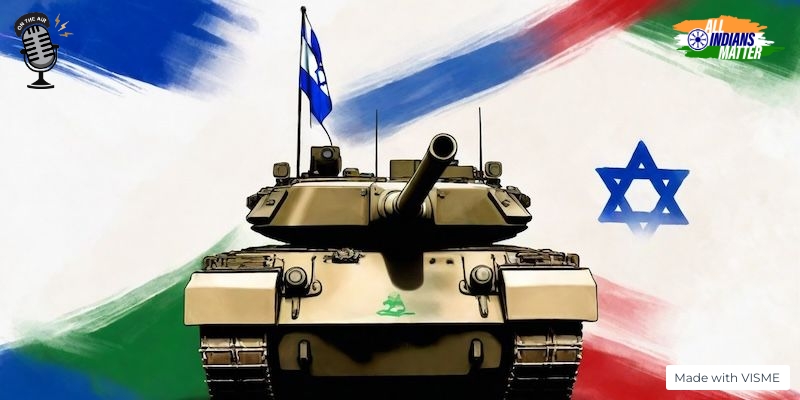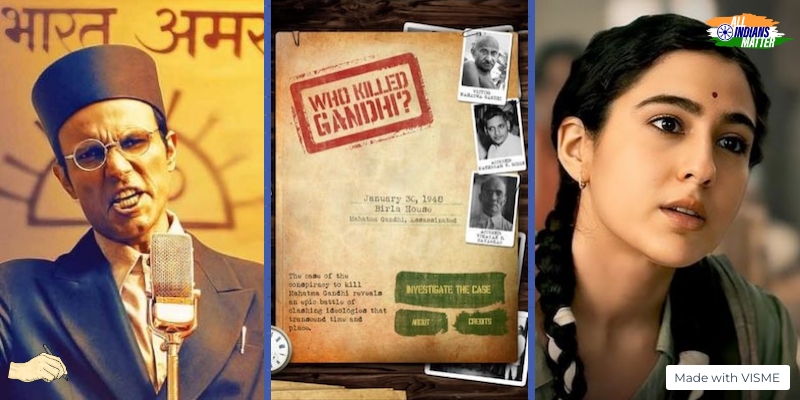Tushar Gandhi
May 26, 2023
May 28, 1883 – May 28, 2023
On May 28, 1883, a boy was born into a Brahmin family in Bhagur, near Nashik. Vinayak Damodar Savarkar showed leadership qualities since his school days, spearheading a band of upper caste boys who attacked mosques and Muslim religious processions as well as solitary Muslims. During his college days at the prestigious Fergusson College in Pune, he established a secret organisation called the Abhinav Bharat Society along with his brother. He was eventually expelled for anti-British speeches and activities.
The young Savarkar went to England to study to become a barrister, where he joined India House and Free India Society, coming in close contact with European revolutionaries, especially Russian anarchists. He learnt bomb making and allegedly supplied guns and explosives to revolutionaries back in India.
While in England, Vinayak wrote a history of the mutiny of the sepoys of the East India Company in 1857 and called it the ‘First War of Freedom’. What would have been uncomfortable was the fact that the sepoys wanted to reinstate the Mughal emperor, Bahadur Shah Zafar, and fight the East India Company under his leadership. Several Indian kings and princes joined the sepoys to reestablish the principalities they had lost to the expansionist East India Company. The British banned Savarkar’s book.
Back in India, the colonial government charged Savarkar with being involved in the murders of British officials. After being lured to London for a tryst with his British lover, Savarkar was arrested and extradited to India. It is claimed that, while the ship carrying him to India docked in the French port of Marseilles, Savarkar escaped but was caught by the port authorities and handed back to the British police.
From revolution to mercy petitions
In India, Savarkar was tried, sentenced to 50 years and imprisoned in the infamous Cellular Jail in Port Blair, which was known as kaala paani. Within six months, he wrote the first of several mercy petitions to the British Crown, begging to be pardoned. Finally, in 1924, he was granted a pardon on the promise that he would not indulge in any anti-British activities or acts seeking independence for India.
Savarkar gave himself the honorific ‘Veer’ and his followers called him ‘Swatantra Veer’ – ironic for a person who pleaded for mercy from the British and secured a pardon by promising not to indulge in any acts associated with the freedom movement. After his release, Savarkar remained steadfastly loyal to his colonial masters and meekly accepted a pension from them, even requesting an increase on several occasions.
Several freedom fighters bore the physical and psychological tortures of the Cellular Jail but refused to bow. Many died, but those who survived proudly returned to the motherland after Independence. They did not beg for clemency, but the one who did is today venerated as ‘Swatantra Veer’ or ‘brave freedom fighter’.
After his release from jail and confinement in Ratnagiri, Savarkar proved his loyalty to the British by boycotting the movements launched by Mahatma Gandhi and the Congress and conspiring to sabotage them. He reinvented himself as a Hindutva fanatic and was among the first to promote the two-nation theory. And, for all his anti-Muslim rhetoric, when it came to grabbing power, Savarkar’s Hindu Mahasabha did not shy from joining hands with the Muslim League to form coalition governments in Bengal and Sindh.
Gandhi in the crosshairs
Several attempts were made on the life of Gandhi. In most of them, the first recorded attempt in 1934 in Pune, a Savarkarite group of upper caste fanatics from Pune were involved. The involvement of the ultra Savarkarite gang of Nathuram Godse and Narayan Apte in the attempts were noted.
In Panchgani, Godse was disarmed as he rushed to stab Gandhi. In Sevagram, once again, the police disarmed and detained Godse as he rushed to attack Gandhi with a knife as the latter was leaving for a dialogue with Mohammad Ali Jinnah. Then an attempt to derail the train carrying Gandhi failed. Gandhi urged in a prayer meeting in Pune that those wanted to kill him should not imperil lives of his companions. In a lighter vein, he added: “…to those who wish to kill me, I say that I intend to live for 125 years. They should not waste their time.” A few days later, from the stage of the Hindu Mahasabha, Godse declared: “Gandhi mhantyaat ki te ekshe panchvees varsha jagnar aahet, pan tyaana jagu denaar kon?!” (Gandhi that he will live for 125 years, but who will let him live that long?)
Prabodhankar Thackeray, Balasaheb Thackeray’s father and Uddhav’s grandfather, got to know of an attempt by Sanatani Hindus to murder Gandhi while he was travelling in Akola. Prabodhankar alerted Gandhians about it and issued a public warning to the Sanatanis to desist from making the attempt.
On January 20, 1948, a trunk call was booked from the Hindu Mahasabha office in Delhi to Savarkar Sadan in Bombay (as it was known then) by Apte, one of the leaders of the gang sent to murder Gandhi. An attempt was made to kill Gandhi that evening during a prayer meeting. A bomb was set off close to where Gandhi sat, but fortunately the attempt failed. Madanlal Pahwa, a refugee, was identified as the one who ignited the bomb and was arrested on the spot. The rest escaped.
From January 20 to 28, Godse and Apte travelled to Pune and Bombay to raise funds and procure a reliable gun to murder Gandhi. On January 27, they met their master, Savarkar, at his home in the Shivaji Park neighbourhood of Bombay. This was revealed to the Kapur Commission by Damle and Kasar, Savarkar’s secretary and bodyguard respectively. It was after meeting him that Godse and Apte flew to Delhi, took a train to Gwalior and on the evening of January 28, with the help of another Savarkarite fanatic, Dattatraya Parchure, procured one of the most efficient guns of that time for close range murders – the Beretta 9 mm automatic.
Godse pumped three bullets into Gandhi’s chest at 5.17 pm on January 30, 1948, finally killing him.
How the gun came into the hands of Godse was never sufficiently investigated and both, Parchure and Savarkar, were never convicted. Since then, based on the observations of the Kapur Commission as well as other historical facts, there has been a lot of debate over whether Savarkar and the Rashtriya Swayamsevak Sangh (RSS) were involved in Gandhi’s murder.
***
Prime Minister Narendra Modi, who’s a member of the RSS, has chosen to inaugurate the new Parliament building on May 28, 2023, the birth anniversary of Savarkar, his true icon. This is not a coincidence. It’s a well thought out strategy to eventually erase Gandhi from the rewritten history of India and to replace him with the father of the Hindutva Rashtra concept, Savarkar, who I call ‘Maafi Veer’. This is the real reason for the prime minister picking this date. Let’s not be fooled by any other explanation.
Tushar Gandhi, great grandson of the Mahatma, is an activist, author and president of the Mahatma Gandhi Foundation. Reach him here: gandhitushar.a@gmail.com.






